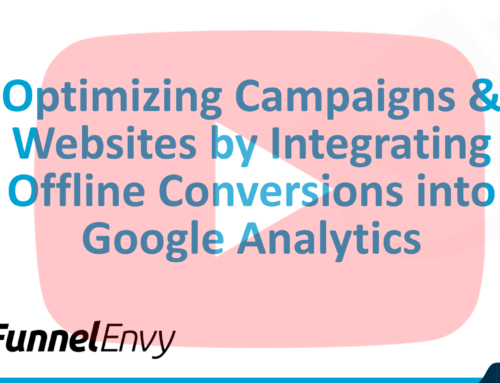If you’re building your sales funnel strictly on a single sale process, you’re missing out on significant profit potential. Cross-selling and upselling can help you quickly maximize one of the most important business key performance indicators (KPIs): your customer’s lifetime value. In other words, a customer isn’t so much valuable because they buy that preliminary $25 product from you. Instead, it’s important to think about how to build a sales experience that carries the $25 eBook customer into your $10,000 group coaching program or your $100 per month subscription product. Here’s a closer look at how techniques such as cross-selling and upselling can dramatically increase the profits in your business.
A closer look at cross-selling and upselling
The role of cross-selling and upselling is most productively understood in the context of how your sales process or funnel is designed. Consider this: each buyer takes a journey from the time that she learns about your product or service until she makes a purchase. Many businesses focus exclusively on that time period in the customer relationship for improving conversions. But this approach misses two critical periods in the buyer-business relationship:
- Before they meet your brand: For many purchases, the buying journey starts when the consumer or business decides that they need a specific product or service, such as a new accounting software or a local massage therapist. This aspect of the buying process looks at how businesses are found by potential customers. Cross-selling (in the sense of getting other businesses to promote your work, either informally through partnerships or more formally through affiliate promotion) is an effective way to do this.
- When/after they make a purchase: When a customer is making a purchase, it’s a great time to cross-sell them other related products or try to upsell them to packages and more expensive products. I’ll explore this more in-depth below, but this is what successful online entrepreneurs often refer to as “making all the profits on the back-end.”
Integration into funnel design
According to Marketing Metrics, the probability of selling to an existing customer is 60 – 70%. The probability of selling to a new prospect is 5-20%. Meanwhile, Bain estimates it’s 6 – 7 times harder to attract a new customer than to retain an existing one. Much of the conversation around conversions focuses on streamlining the initial customer funnel to make sales more quickly and simply. But another approach that can drive up your revenues significantly is focusing on capturing more value from your existing relationships through cross-selling and upselling.
It’s important to take a step here and be realistic about something: this approach requires a deliberate effort at funnel design. Many companies build their product, build their website, invest in advertising, and then retroactively decode how their funnel has developed. But it’s usually more profitable and more advantageous in the long-run to be proactive on this point. The more you construct a deliberate customer experience, the better you’ll be poised to make strategic improvements that can drive your conversions through the roof.
Partner-driven cross-selling
There are two types of cross-selling that can impact your business. The first is the kind of informal partnership that often exists among businesses. Your service may just cover a portion of a business transaction, and clients may ask you for a referral to a trusted partner to complete another piece. For example, you may be a web designer and refer clients to a copywriter as needed. Or you may be a lawyer that regularly refers accident clients to a chiropractor for treatment. The relationship works on two dimensions: it sends new streams of business in your direction, usually in exchange for a small fee paid to the referrer. You also promote their services as the opportunity arises. These arrangements vary widely by industry, from a small one-time bonus to a percentage of customer revenue for the lifetime of the relationship. Here are a few strategies for making the most of cross-selling relationships.
Identify them: Are you already doing informal cross-selling with partners or colleagues? If so, that’s a great opportunity to engage in a proactive conversation about each of your goals and how you can help one another achieve them. If this hasn’t happened organically, create a list of individuals you know that could be a likely source of referrals and reach out to get the conversation started.
Incentivize them: Would revisiting compensation make these partnerships more lucrative? In general, affiliate relationships are more productive when you’re more generous. The most successful product promotions on affiliate management platforms often give away as much as 75% of the revenues. Your initial reaction may be to balk at this figure. Only you can determine your economics, but as a guiding principle remember: the more profitable promoting your services may be, the more likely partners are to spend time doing so.
Measure them: Just as you would with any other source, it’s important to figure out who your most profitable affiliates are. This could be who is sending the most work your way, or who is sending the most lucrative clients to your business. Either way, keeping track of who is sending you the best referrals and investing your energies into those relationships can pay major dividends. Think of creative ways to reward their work, such as a higher level of compensation, or specialized promotion of their own products or services.
If you’re selling products, it may be time to consider an affiliate program. To scale, especially in the world of digital products and online marketing, affiliate programs are often the key. Affiliate programs are typically a bit more sophisticated than informal cross-selling, and can be self-administered, run by affiliate agencies, or through massive platforms such as Clickbank. Depending on what you’re selling, you may want to work with a small trusted network of affiliates or cast a wider net. If you’re unsure of how to manage affiliate marketing, I recommend Smart Affiliate Marketing Strategies as one resource to get you started.
Existing customer cross-selling
Another approach that’s important to consider is cross-selling related products to your existing customer base. I won’t spend too much time here, since this is the most intuitive of all these topics. But it’s often helpful to sit down and review past customer data to see what relationships naturally form between product clusters. Do all of your general social media course students go on to purchase your specialized Twitter class? Or do your accounting clients go on to purchase your accounting software? Using these as guidelines can help you identify natural synergies, and give you a clear path to cross-promote your products effectively moving forward. Always measure and test, because surprising connections may arise during targeted promotions that didn’t naturally emerge from pre-existing customer data.
The basics of upselling
Upselling takes a willing customer that’s already said yes, and gives them the chance to say yes again to more expensive product or service. Usually, you want to target customers with closely related or complementary products. One of the most effective ways to upselling is to do it at the time of purchase, immediately after a customer has made one product. Another approach is through email marketing, targeting past customers based on their purchases when you’re releasing or promoting a similar product or service. There are a few types of upsells that you can consider.
- Done for you: If the product you’re selling is a how-to, such as building a website or creating a product, consider offering a done for you option. This approach complements the program by supporting customers through an initial setup phase and/or delivering the final product to them to get them over the typical getting started hurdles.
- Coaching: Coaching or consulting can be sold in hourly blocks or packages. As a supplement to a program, coaching enables you to offer customized, one on one guidance or group coaching to clients. Many customers want additional help making the leap from taking your more generalized product information and applying it to their specific situation. This type of upselling can lead to long-term, profitable relationships.
- Accelerate your results: When customers make an investment in a product or service, many are anxious to dive in and really get going. Consider, for example, a fitness program. An “accelerate your results” upsell could be a nutrition program that kick starts the results from a workout program into high gear.
- Product with a twist: Product with a twist upsells focus on customers that are really excited by a specific program, but want some variation. To take the fitness example, perhaps you’re selling a high intensity cardio program geared toward runners. You might offer an upsell option with a similar program for people interested in cross-training, geared toward high intensity cardio on the stationary bike or the elliptical.
- Live events: Some people hate wading through reams of product content, or simply want more of a live experience. An easy upsell could be to offer your material in video form, as a webinar, or even as a one day in person event. Depending on your material, this ticket item can range from a small fee to a four figure upgrade.
Bringing it all together
From a conversion perspective, my final recommendation is this: architect your funnel as deliberately as possible. When you’re developing your products or revisiting your sales strategy, look for opportunities to work affiliate programs, cross-sell related products, and upsell customers to bigger ticket items. Above all, measure everything to find out what’s working, refine your marketing, and inform future campaign development. Cross-selling and upselling may be more complicated than straight selling a single product, but the returns that you get – both in profits and in lifetime customer value – will make it well worth the effort.







